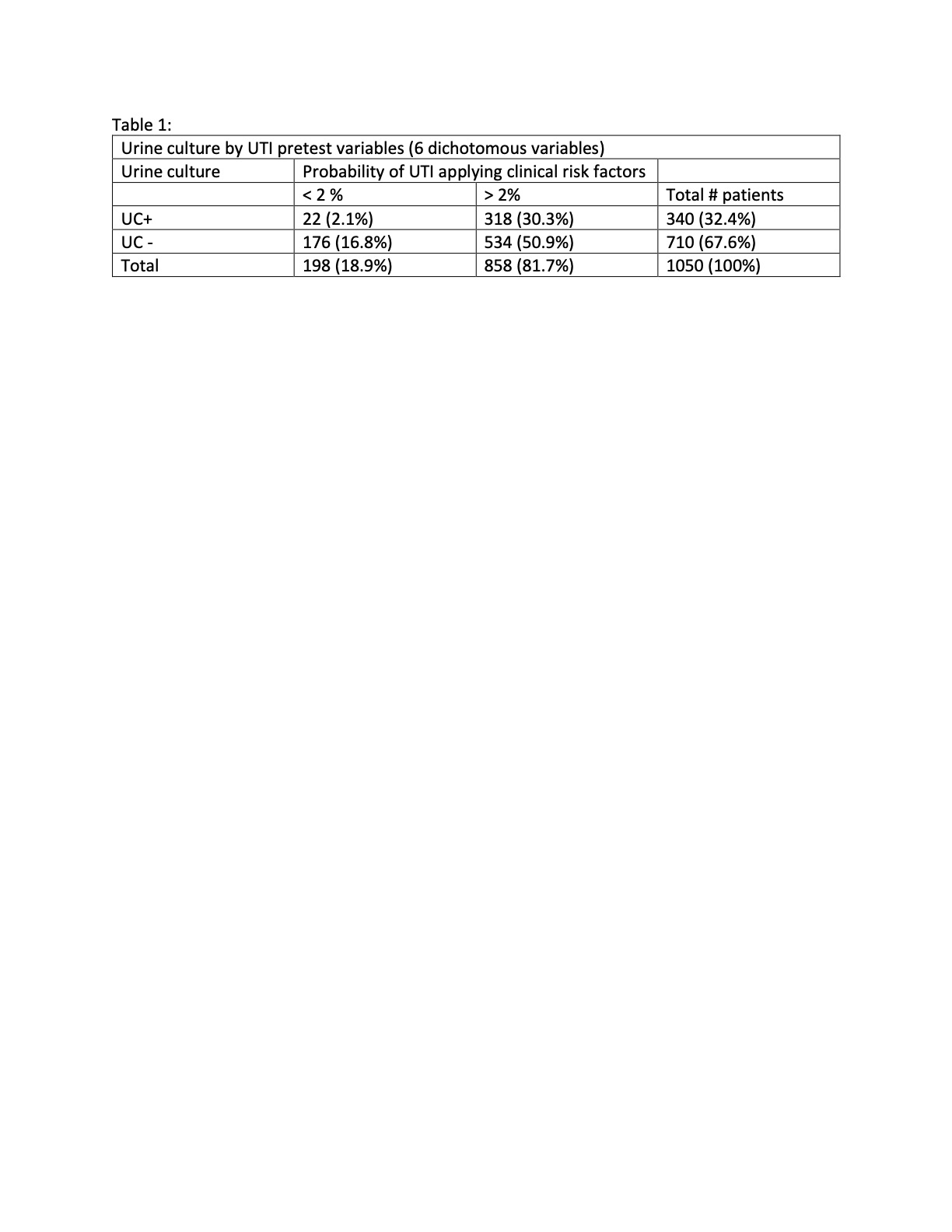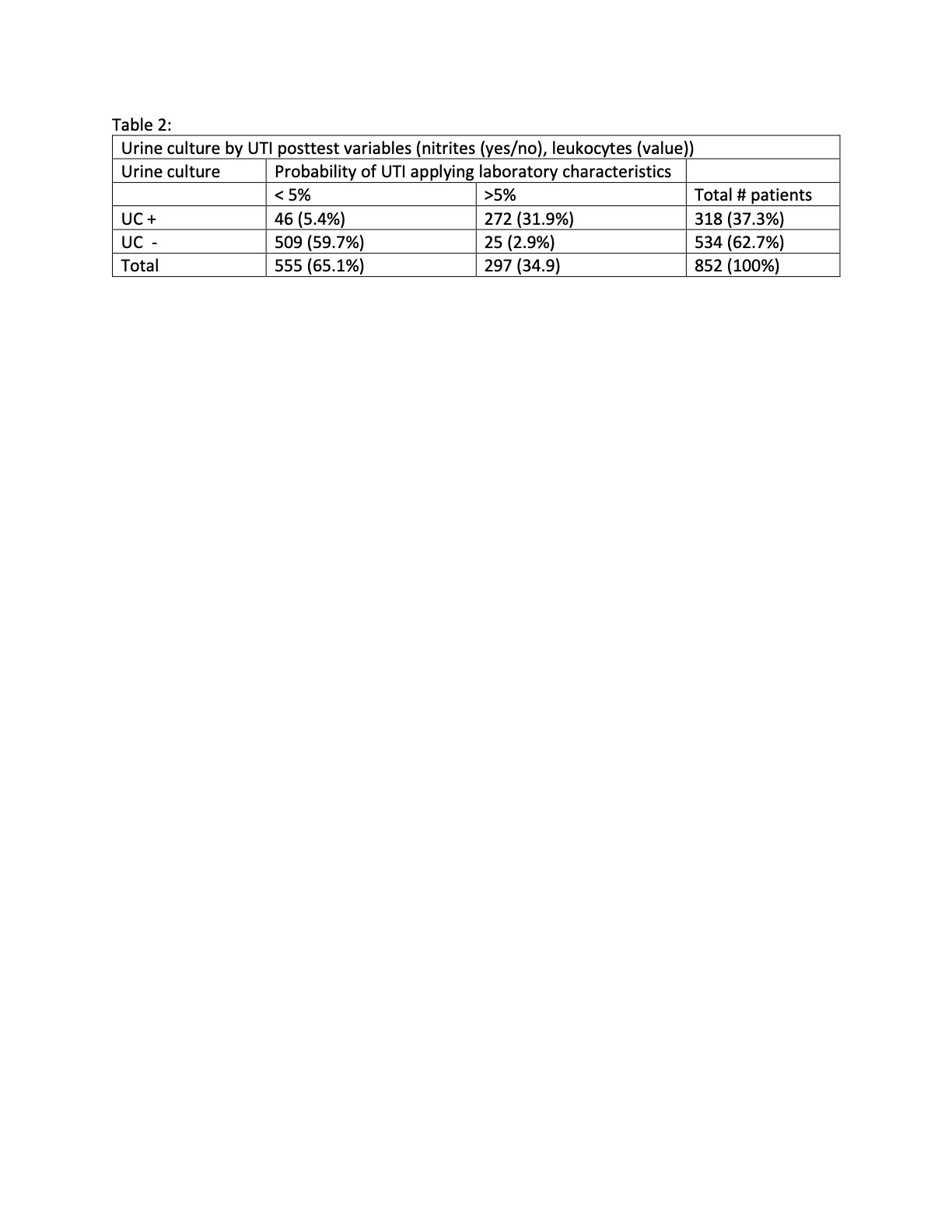Emergency Medicine: All Areas
Emergency Medicine 3
54 - Validation of a Calculator for Estimating Probability of Urinary Tract Infection in Young Febrile Children.
Publication Number: 54.112

Hannah Sneller, MD (she/her/hers)
Assistant Professor
Children's Hospital & Medical Center/UNMC
Omaha, Nebraska, United States- DM
Donna M. Moro-Sutherland, MD
University of Nebraska College of Medicine
Chapel Hill, North Carolina, United States
Presenting Author(s)
First Author(s)
Background:
At the Children’s Hospital of Pittsburgh Shaikh N et al. designed a calculator that first estimated the probability of urinary tract infections (UTIs) based on clinical variables and then, if laboratory testing was performed, updated the probability estimate based on results (UTICalc). As a result, testing and treatment could be tailored thereby improving outcomes for children with UTIs.
Objective:
To test the UTIcalc in children 2–23-months with fever to determine if it is applicable as a predictive tool in our patient population
Design/Methods:
Patients included were febrile children aged 2 months to 23 months, brought to Children’s Hospital & Medical Center (CHMC) Emergency Department (ED), who had a urinalysis and urine culture obtained. Electronic medical records were reviewed. The model which includes both clinical variables as well as laboratory results was applied to febrile children younger than 2 years of age between January 2016- December 2021, in whom a urine specimen was obtained by bladder catheterization. The UTIcalc includes 6 dichotomous clinical risk factors (age < 12 months, temperature > 39C, history of UTI, female, or uncircumcised males, no other fever source, and duration of fever > 48 hours. The 4 laboratory characteristics include nitrites(yes/no), leukocyte esterase (value), WBC/mm3, (value) and bacteria on gram stain (yes/no). A positive urine culture was defined as growth of a uropathogen at a concentration of at least 10,000 colony-forming units/ml.
Results:
A total of 1050 children were included of whom 80.8% were female and of the male patients, 52% were uncircumcised. The clinical model in UTICalc decreased the need for catheterization by 16.8% and reduced the number of missed cases to 2.1%. (Table 1) Compared with empirically treating all children with a leukocyte esterase test result of 1+ or higher, the laboratory screening in UTICalc missed 5.4% of the total patients requiring treatment and reduced empiric treatment by 59.7% (Table 2).
Conclusion(s):
The UTICalc can be applied when screening and considering treatment for a suspected UTI in children 2-23 months with fever in our ED.


